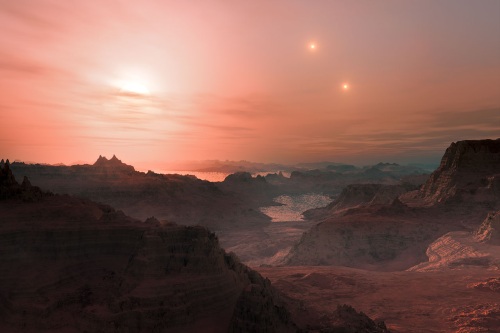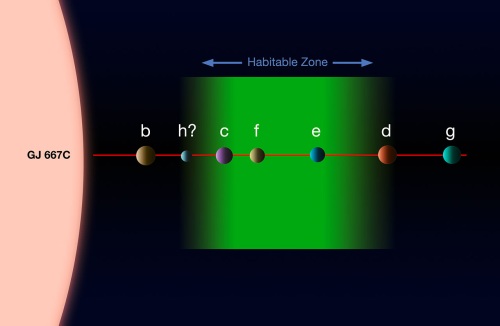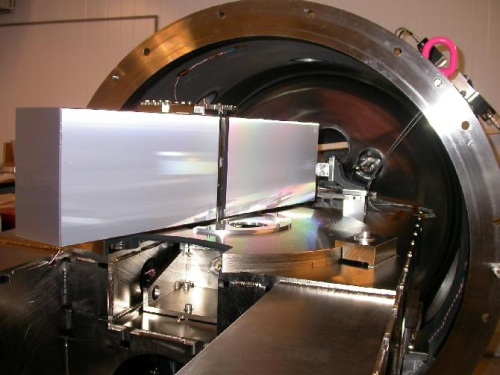Gliese 667C lies within the constellation of Scorpius. It is a low-luminosity “M-dwarf” star just over one-third the mass of our Sun and is only 22 light years away. Previous studies suggested there might be three planets surrounding this star, with one other lying in the star’s habitable zone.

Artist’s rendering of what the view might look like from one of the planets in Gliese 667C’s habitable zone, the aptly named Gliese 667Cc.
Upon re-examination of the star, a team of astronomers, led by Guillem Anglada-Escude of the University of Göttingen, Germany, and Mikko Tuomi, of the University of Hertfordshire, U.K., has not only debunked this theory, they’ve actually increased the number of planets within the star’s habitable zone from one to three.
“We knew that the star had three planets from previous studies, so we wanted to see whether there were any more,” says Tuomi. “By adding some new observations and revisiting existing data we were able to confirm these three and confidently reveal several more. Finding three low-mass planets in the star's habitable zone is very exciting!”

Example of Gliese 667C’s habitable zone.
The team was able to achieve this breakthrough using a suite of high-end telescopes, including a 3.6-m model at the Silla Observatory (Chile), which incorporates the highly precise High Accuracy Radial velocity Planet Searcher (HARPS) Instrument. What makes the HARPS so effective is that it employs an indirect method of detection; that is, it infers the existence of orbiting planets via the way in which their gravity makes a parent star twitch in its motion across the sky.

The highly precise and not-often-wrong HARPS Instrument.
Now, given that the Gliese 667C is an M-dwarf, its habitable zone can be much closer than our Sun because its cooler temperature makes liquid still possible (and thus the planet habitable) even at nearby distances. That said, the scientists were able to detect three planet-like bodies within this life-supporting area. They were also able to determine these properties had orbital periods of 28, 39, and 62 days, respectively, and mass sizes ranging from 2.7 to 3.8 that of the Earth’s.
Cosmic bodies of that proportion — that is, a mass slightly larger than our planet but less than bodies like Uranus or Neptune — are deemed “Super-Earths” and they are believed to have a mostly rocky surface. This is all, of course, educated guessing. At 22 light years away, no tool or form of measurement has been created to determine the precise conditions of these planets.

Artist’s impression of what the sky might look like from the exoplanet Gliese 667Cd, looking toward the parent star and featuring, at top, the other super-Earths in the habitable zone.
“This exciting result was largely made possible by the power of HARPS and its associated software and it also underlines the value of the ESO archive,” said Gaspare Lo Curto, the ESO scientist responsible for HARPS. “It is very good to also see several independent research groups exploiting this unique instrument and achieving the ultimate precision.”
To learn more about the discovery, read the group’s full write-up, “A dynamically-packed planetary system around GJ 667C with three super-Earths in its habitable zone”, as published in the journal, Astronomy & Astrophysics .
Advertisement
Learn more about Electronic Products Magazine





